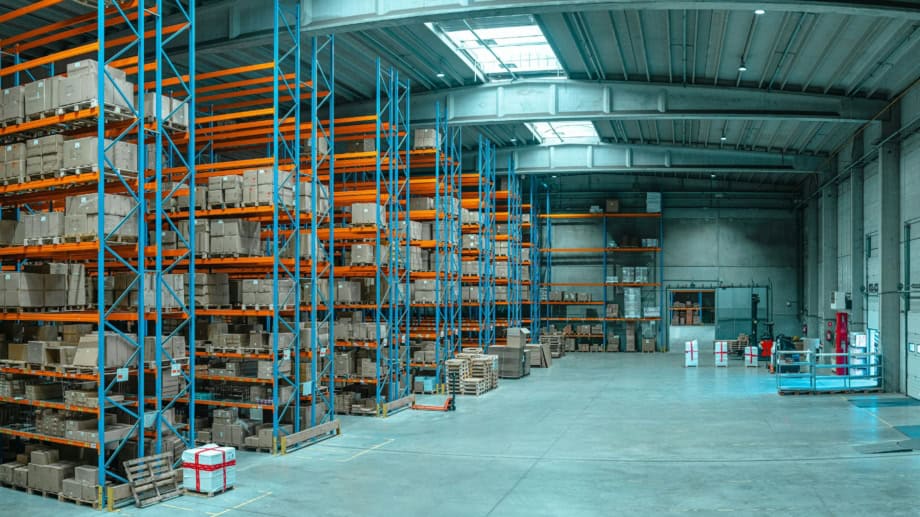It’s easy to assume that supply chain resilience is all about tools and tech. But no matter how good your systems are, if your suppliers aren’t aligned, you’re going to feel it. That’s where supplier collaboration comes in.
Think of it like rowing a boat. You could have the finest vessel and the best-designed paddles, but if half the crew is rowing out of sync, or worse, not rowing at all, you’re going nowhere fast.
Supply chain disruptions don’t just highlight cracks in systems. They expose gaps in relationships, communication and clarity. And most of those gaps appear where suppliers and buyers meet.
TL;DR – What this article covers
- Common reasons supplier collaboration breaks down, from missed emails to paper-based processes
- The hidden costs of manual supplier onboarding, especially when dealing with long-tail suppliers
- Why poor supplier experience leads to low adoption and strained collaboration
- What modern supplier-first tools like Flow offer to reduce friction
- How collaborative goods receipt processes help eliminate warehouse errors
- A look at how ecosio’s Flow and Monitor improve supplier visibility and engagement
- Why supplier collaboration is key to long-term supply chain resilience
Common breakdowns in supplier collaboration
Supply chains don’t fall apart in dramatic ways. They fray. A late delivery here. A missed update there. Slowly, misalignment creeps in, and before you know it, a minor hiccup becomes a full-blown disruption.
Let’s look at a few of the most common reasons supplier collaboration breaks down.
1. Email-based communication leads to missed or delayed orders
Many of us are familiar with the frustration of digging through email inboxes in search of a document that was supposedly sent last week. Now, imagine that challenge multiplied across global operations, involving thousands of orders, numerous departments, and an extensive supplier network.
While email may seem like a convenient tool for supplier communication, in reality, it’s an unreliable channel. Messages are easily missed, misinterpreted, or delayed. And when the success of a critical delivery depends on someone noticing the right email at the right time, the risks are simply too high.
Typical issues caused by email-based processes include…
- Missed orders due to spam filters or overlooked threads
- No clear audit trail for approvals or order changes
- Human error from copying and pasting order data
In short, while email might feel easy, it often creates more friction than it removes.
2. Manual supplier onboarding slows down project timelines
Delays in supplier onboarding can quickly derail important business initiatives. Whether launching a new product or opening a new site, progress often stalls when key suppliers are not yet enabled.
Manual onboarding methods such as spreadsheets, shared folders, or basic ERP tools create confusion and slow everything down. The impact is especially noticeable when working with long-tail suppliers – those smaller partners that may only handle a small portion of your spend, but represent a significant percentage of your vendor base.
Without a fast, repeatable onboarding process, two things happen:
- Procurement teams spend more time chasing than coordinating
- Smaller suppliers fall through the cracks or never get fully enabled
This slows down your ability to scale or adapt when change is needed most.
3. Paper-based goods receipt increases the risk of errors
If your warehouse team is still checking off deliveries with pen and paper, chances are you’re losing hours every week, and accuracy along with it.
Labels get damaged. Boxes arrive with the wrong references. Staff are left guessing what’s what. This slows everything down and leads to mismatches in your system.
It’s not just about inconvenience either. These mismatches ripple downstream, affecting:
- Inventory accuracy
- Production planning
- Invoicing and payment cycles
Plus, your relationship with the supplier can also suffer.
4. Limited visibility into supplier tool usage creates blind spots
You might have invested in a brilliant supplier portal. But do you know who’s using it? Or how?
Lack of visibility into supplier adoption can mean that…
- You don’t know which suppliers are flying blind
- You can’t see where support or reminders are needed
- You risk non-compliance simply because no one noticed a supplier never activated their access
If you’re constantly wondering whether your suppliers are using the system or not, it’s a sign that something’s off.
The hidden cost of manual supplier onboarding
Onboarding sounds like a simple step. In reality, however, it’s an ongoing challenge, especially when you’re dealing with hundreds or even thousands of suppliers across different regions.
When onboarding is done manually, it becomes a slow, fragmented process. One team sends invites. Another follows up. A third answers support questions. All the while, no one’s quite sure who’s live, who’s stuck and who never even opened the email.
In particular, the following issues create huge opportunity costs:
- Long-tail suppliers take forever to activate, reducing network reach
- Onboarding teams burn time on follow-up instead of strategy
- Missed connections delay production and deliveries
If you’re scaling or adapting to new markets, manual supplier onboarding can quietly become your biggest bottleneck. Especially when you’re relying on one-time interactions or seasonal partners who won’t wait around.
The good news? This is fixable. And that brings us to the heart of the matter: supplier experience.
Why supplier experience is key to successful collaboration
If supplier collaboration is the goal, then supplier experience is the path.
Poor tools and inconsistent UX reduce supplier adoption
Suppliers aren’t your employees. You can’t train them the way you train internal users. That means any system you ask them to use needs to be clear, fast and reliable from the first click.
Unfortunately, many suppliers still face:
- Clunky interfaces that vary by buyer
- Long forms with no autofill or no dynamic behavior based on user inputs
- Login processes that require individuals to jump through hoops
It’s no wonder some ignore your messages or delay onboarding. They’re not being difficult, they’re reacting to the friction you’ve accidentally introduced.
Every bad experience leaves a mark. If a supplier struggled once with a legacy web EDI tool, chances are they’ll be hesitant to engage next time. Over time, this creates a pattern of reluctance that hurts collaboration before it even starts.
What a modern web EDI experience looks like
Instead of forcing suppliers to adapt to you, modern portals offer an experience designed around them.
With ecosio’s web EDI, Flow, for example, suppliers get:
- Instant access to live orders, eliminating the need to search through email chains
- Real-time updates, reducing the risk of missed messages or delays
- Pre-filled turnaround documents, enabling faster confirmations and fewer manual steps
- Built-in label generation, simplifying the shipping process
Features like these reduce supplier friction and build trust, creating the conditions for meaningful supplier collaboration. When suppliers feel supported, they’re far more likely to engage fully.
Making goods receipt more collaborative and error-free
It’s easy to overlook warehouse operations in supplier collaboration. This is a mistake, however, as when goods receipt goes wrong, downstream processes suffer.
Here’s a typical scenario:
- Supplier sends delivery with missing labels
- Goods arrive and warehouse staff don’t know what’s what
- Manual checks begin, slowing down intake
- Errors creep into your ERP system
Now scale that across multiple deliveries and locations, and the impact becomes a significant drain on efficiency and resources.
Collaboration at this stage means giving suppliers the tools to help you do your job better. That might include, for example:
- Letting suppliers enter packaging data when confirming shipments
- Automatically generating barcode labels based on that data
- Scanning those labels at intake, eliminating manual effort
Suddenly, goods receipt becomes fast, accurate and predictable, and your warehouse team can spend more time managing flow, rather than fixing mistakes.
It’s not just about digitising a few forms. It’s about creating a supplier-first experience that drives adoption and removes the usual friction points.
When combined with ecosio’s user-friendly Monitor, you gain transparency across the full supply chain, with clear visibility into onboarding progress, partner activity and document exchange.
With Flow, you can:
- Invite suppliers yourself with no IT involvement
- See who’s active, who’s pending and who’s fallen behind inside Monitor
- Automate follow-ups so no one gets lost in the shuffle
- Generate delivery labels with all the right reference directly in the portal
- Allow suppliers to manage documents, generate labels and communicate, all in one place
This unified approach transforms how supplier collaboration works in practice. Long-tail suppliers become just as connected as your top-tier partners. Meanwhile, your internal teams get time back to focus on growth.
The future of supply chain resilience is supplier-first
It’s easy to focus on tools, dashboards and performance metrics. But at the end of the day, supply chain resilience comes down to people working together, smoothly and consistently.
And that means your systems can’t just be powerful, they need to be usable.
Putting supplier collaboration at the heart of your operations doesn’t just make things run better. It makes you more agile, more scalable and better equipped to handle whatever comes next.
So if you’re still struggling with manual supplier onboarding, clunky portals or low adoption rates, it might be time to rethink how you collaborate.
Want to explore whether web EDI is right for your business? Download our white paper: Can web EDI transform my supply chain?
























